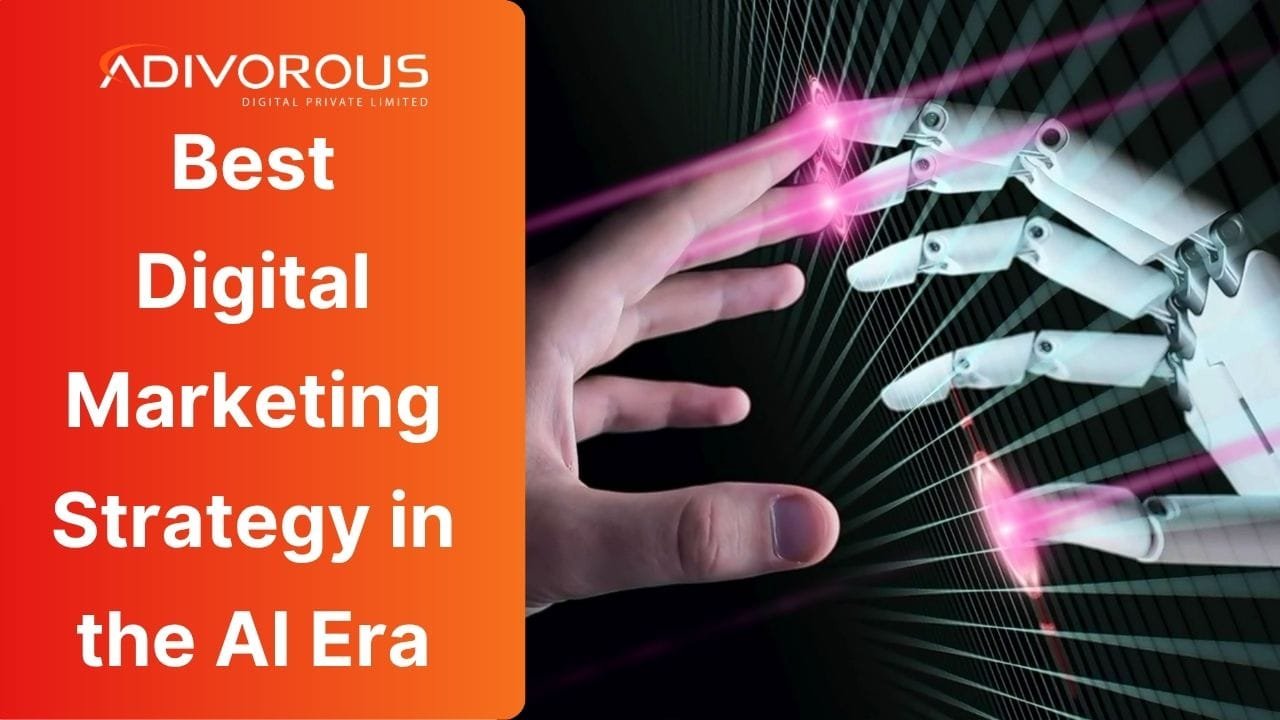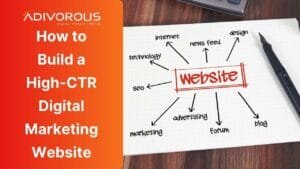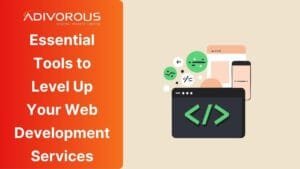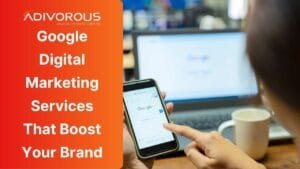It does not matter if you believe in the AI bubble or not; this decade will see the AI-fication of everything done digitally. Especially, this change will take place in our digital marketing strategies. If you follow Search Engine Journal, you will see the indication in their findings of the rapid change of strategy in this era, particularly for SEO strategising. From the higher use of AI chatbots to the prevalence of AI Overview in Google Search. More AI is now being used in Google campaign management. As well as in various Meta platforms for better customer ad targeting. Thus, in this post, Adivorous will help you what digital marketing strategies are best suited for the new chapter of online marketing.
What Does Digital Marketing Look Like in the AI Era?
Whether it is digital marketing for businesses like retail stores or B2B companies. Digital marketing has evolved in the AI Era from simple automation or scheduling posts. It has evolved to intelligence augmentation, where predicting what a user wants before they ask takes place. The best strategies now focus on partnering with algorithms rather than just trying to trick them. The learning nature of modern-day LLM models makes them the perfect bridge to understand the customer on a deeper and personal level.
| AI Platform | Unique Features | Primary Use Cases |
|---|---|---|
| DeepL | Highly accurate AI translation, context-aware phrasing Codersera | Language translation, global communication |
| Jasper AI | Specialised in marketing copy, brand voice customisation Codersera | Advertising, blog writing, SEO content |
| Synthesia | AI video generation with avatars and voiceovers Codersera | Corporate training, explainer videos, marketing |
| Claude (Anthropic) | Constitutional AI for safer, ethical responses LinkedIn | Research, enterprise chat, safer AI deployments |
| Google Gemini | Deep integration with the Google ecosystem, multimodal reasoningkedIn | Search, productivity, enterprise workflows |
| ChatGPT-5 (OpenAI) | Multimodal (text, image, audio, video), real-time reasoning, persistent memory LinkedIn | Conversational AI, content creation, coding assistance |
| Perplexity AI | Real-time search + conversational answers LinkedIn | Research, Q&A, knowledge discovery |
SEO is Evolving into GEO as an Emerging Digital Marketing Strategies
Traditional SEO aimed at encouraging users to click on a link. However, with the rise of Google AI Overviews, ChatGPT, and Perplexity, users can often find their answers without clicking. Therefore, it’s crucial to optimise your content to be recognised as the source of that information. Ensure that your content is structured in a way that can be easily understood by AI models, not just by human readers. Additionally, it’s important to ensure that your brand name is included in the AI-generated summaries by being the primary source that is cited.
Therefore, instead of focusing on keywords, and later on user intent. Focus on the user’s question and what they intend to find. People who use AI for search do not entirely depend on keywords, but they engage in a conversation with the AI. While the AI provides them answers in the same conversational tone. Thus, you need to focus on making your content conversation-friendly. For example, AI users ask full questions like “What is the best CRM for small consulting firms?”.
Moreover, ensure to structure your headers as questions and provide direct, concise answers immediately following them, similar to the “inverted pyramid” style. Additionally, make sure that your content is marked up with technical schema (FAQ, How-to, Product, Organisation). This will assist AI bots in categorising your data as factual and authoritative.
Combine the Best of the Both Worlds for an Effective Digital Marketing Strategies
Relying exclusively on AI for content creation results in generic output or what is known a Slop, which can undermine trust. On the other hand, depending solely on humans is often too slow. The most effective strategy is to adopt a hybrid model. It’s important to identify where AI can be leveraged for its strengths and where human judgment is essential. Use AI for the foundational tasks, such as research, outlining, and generating variations, while reserving human contributions for the more impactful elements, like expressing opinions, providing nuance, and creating emotional connections.
- How to execute:
- Ideation & Briefs: Leverage AI to identify competitor gaps and create detailed content briefs.
- First Drafts & Repurposing: Use AI to transform a human-written whitepaper into 10 LinkedIn posts, a Twitter thread, and a video script.
- The Human “Moat”: Make sure every piece of content includes a clear point of view, personal anecdotes, or proprietary data that an AI can’t fabricate.
| Strategy | Old Way (Pre-AI) | New Way (AI Era) |
| Search | Keywords & Backlinks | Entities & Answers (AEO) |
| Content | Volume & SEO Stuffing | Unique POV & Proprietary Data |
| Ads | A/B Testing (Manual) | Predictive Targeting & Dynamic Creative |
| Outreach | Mass Cold Emailing | Hyper-Personalized 1:1 Messages |
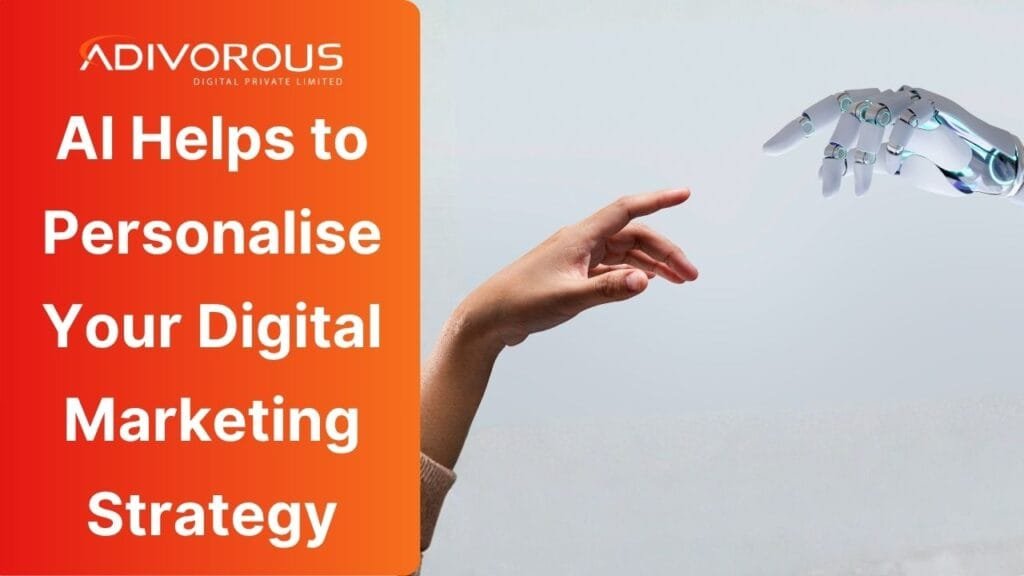
AI Helps to Hyperpersonalise Your Digital Marketing Strategies
As previously mentioned, AI is an invaluable tool for gaining a deeper understanding of your target audience. In the early days of virtual assistants like Alexa and Google Assistant, personalisation was limited to simple greetings, such as “Hello [First Name].” Today, AI personalisation has evolved significantly. For example, it can now offer insights like, “I noticed you looked at winter coats; here’s a discount on the specific scarf that matches the coat you purchased last year, delivered at the exact time you typically check your emails.” While some people may feel that this level of insight borders on invading privacy, it’s important to note that AI can offer personalised experiences without compromising individual privacy.
How can you personalise your digital marketing strategies using predictive analysis? The first step you have to take is to transition from reactive marketing, which focuses on analysing past behaviour, to proactive marketing that predicts future intent. Utilise AI tools to identify customers who may be showing subtle signs of leaving—such as a decrease in login frequency and automatically trigger retention offers for them. Additionally, employ programmatic ad platforms that can automatically change images, headlines, and calls-to-action (CTAs) in real-time, depending on who is viewing the ad.
New Era Digital Marketing Strategies is all about Conversational Marketing 2.0
Chatbots used to be frustrating decision trees; they were only good at simple tasks like providing passable answers to turning on or off lights and other smart home appliances. However, today, the new “Agentic AI” can reason, browse the web, and perform tasks for common users, while power users can use AI to Vibe coding, website designing and many more. AI enables you to structure your digital marketing strategies in a much faster and effective way, which would have taken forever to do on your own.
For modern-day Agentic AIs, engaging in conversation is crucial for success, and it’s important to leverage this opportunity. For instance, deploy AI agents that function as concierges rather than mere barriers. Instead of providing a search bar, offer a chat interface that prompts users with the question, “What are you trying to accomplish?” and suggests a bundle of products tailored to their needs. Additionally, utilise AI to have natural conversations with potential leads, qualifying them based on their budget and timeline before scheduling a meeting for your human sales team.
The Real Digital Marketing Strategy Still Lies in Trust
Remember, you are not the only one who uses AI to improve their digital marketing. As AI content floods the web, “human” signals become premium luxury goods. At one point, when the AI slop becomes so frustrating to deal with, people will desperately search for a human anchor. This is where yoy must strike by proving your humanity (it does sound ironic, but this is where the future is headed).
To start, focus on creating in-person videos without using any AI-generated content. It’s much harder to impersonate a founder speaking on camera than to produce a text blog post. Additionally, prioritise short-form videos, such as Reels and Shorts, featuring a real person addressing the audience. Build trust in your marketing by demonstrating genuine authenticity. Furthermore, consider investing in closed communities (like Slack, Discord, or Circle) where peer-to-peer interactions take place—something that AI cannot easily replicate.
Conclusion
At Adivorous, we believe in forward thinking, which indicates that we implement AI in refining our digital marketing strategies to help our clients see success. However, that does not mean that we throw AI slop around and hope for what sticks to the wall. In the era of AI, innovation moves faster than we can react. So do the issues that stem from the abuse of newer technology. Therefore, to keep your brand ahead, you must strike a balance to bring the advantages of AI and the Human out of the box thinking for better overall results.
FAQs
- Will AI replace digital marketers?
- No, but it will replace marketers who fail to use it. AI is great at execution and speed, but you still need to bring strategy, empathy, and creative taste.
- Does Google penalise AI-written content?
- Not explicitly. Google rewards quality, not authorship. However, raw AI content often ranks poorly because it lacks a unique “experience” and can be factually repetitive.
- What is the biggest risk of using AI?
- Blending in. Since AI is trained on the same average data, it produces generic output. If you don’t add a unique human point of view, you will sound exactly like your competitors.
- How do I optimise for Gemini/ChatGPT/Perplexity?
- Establish consensus. AI tools reference authoritative sources. Prioritise Digital PR by gaining mentions in trusted industry publications and reviews, allowing AI to recognise you as the best answer.

